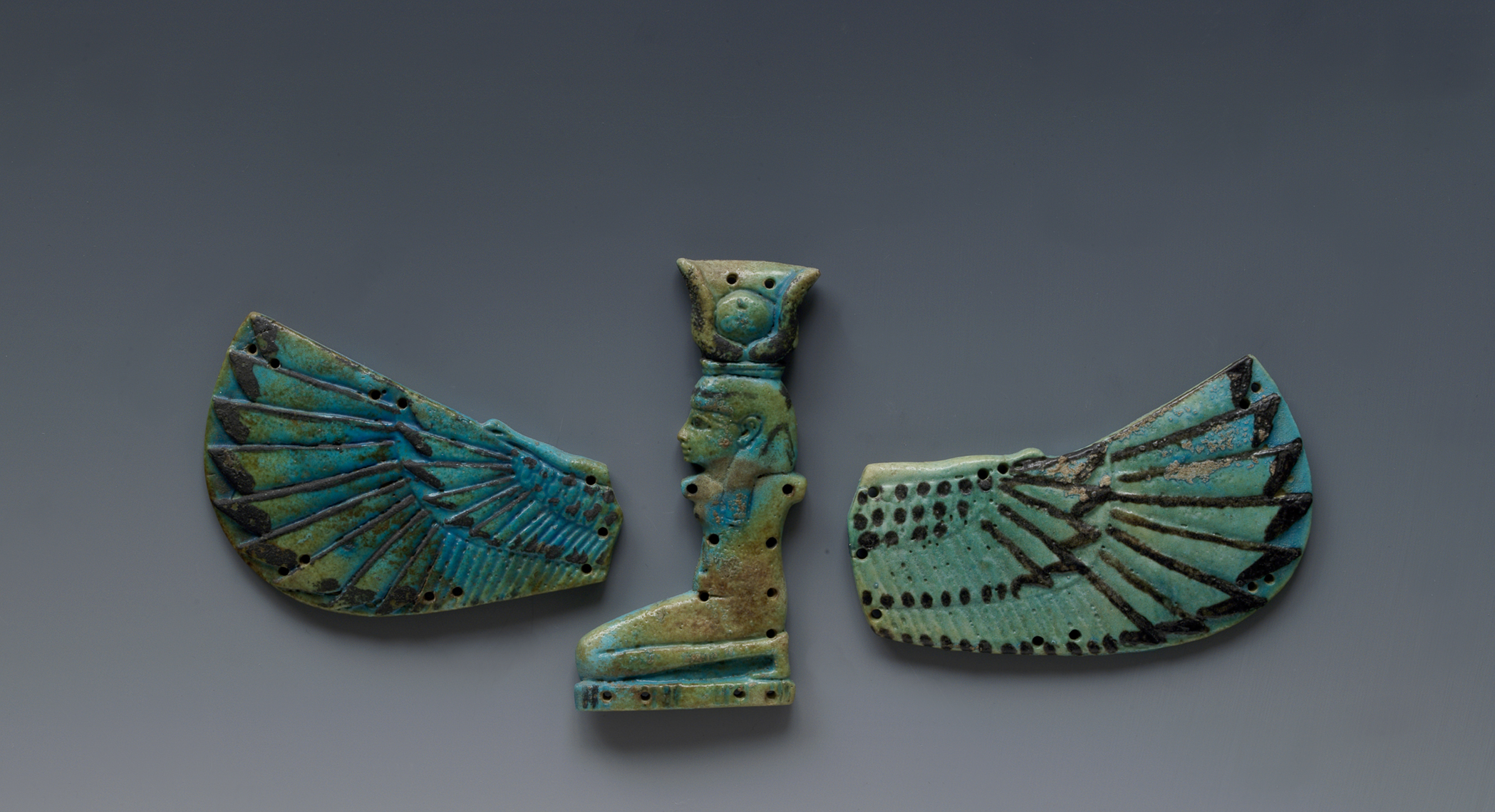
- Egypt, Late Period, 26th Dynasty (664–525 BC)
- Greenish faience
- Inv. 162B
Winged image of the goddess Isis (?)
This funerary ornament in green faience with brownish tones portrays the goddess Isis (this attribution is the most plausible, because the goddess appears more commonly on funeral materials) in the amulet form used in mummification rituals, i.e., with holes so that it could be sewn into the linen bands that were wrapped about the body, normally at the point where the arms were crossed. The face reveals fine anatomical details, with a clearly defined nose, mouth and ears, while her iris is indicated by a black dot.
The goddess Isis, whose iconography is often similar to that of the goddess Hathor, is shown kneeling on a mat and crowned by her symbols: the solar disc framed by two lily-shaped horns standing on a small base on the figure’s hair. Open wings stretch from her outstretched arms, and the feathers start from a centre with a scale decoration heightened with black dots.
From the Later Period onwards, similar funerary ornaments were incorporated into the traditional and complex network of pearls, made up of many tiny faience tubes and other materials that were wrapped around the shroud. Sometimes, instead of having a figurine of Isis, her image was painted onto the fabric.
MacGregor Collection. Acquired by Calouste Gulbenkian through Howard Carter at the sale of the MacGregor Collection, Sotheby’s, London, June/July 1922.
H. 10.5 cm; W. 22.5 cm
Araújo 2006
Luis Manuel de Araújo, Egyptian Art. Calouste Gulbenkian Collection. Lisbon: Calouste Gulbenkian Museum, 2006, pp. 106–7, cat. 20.